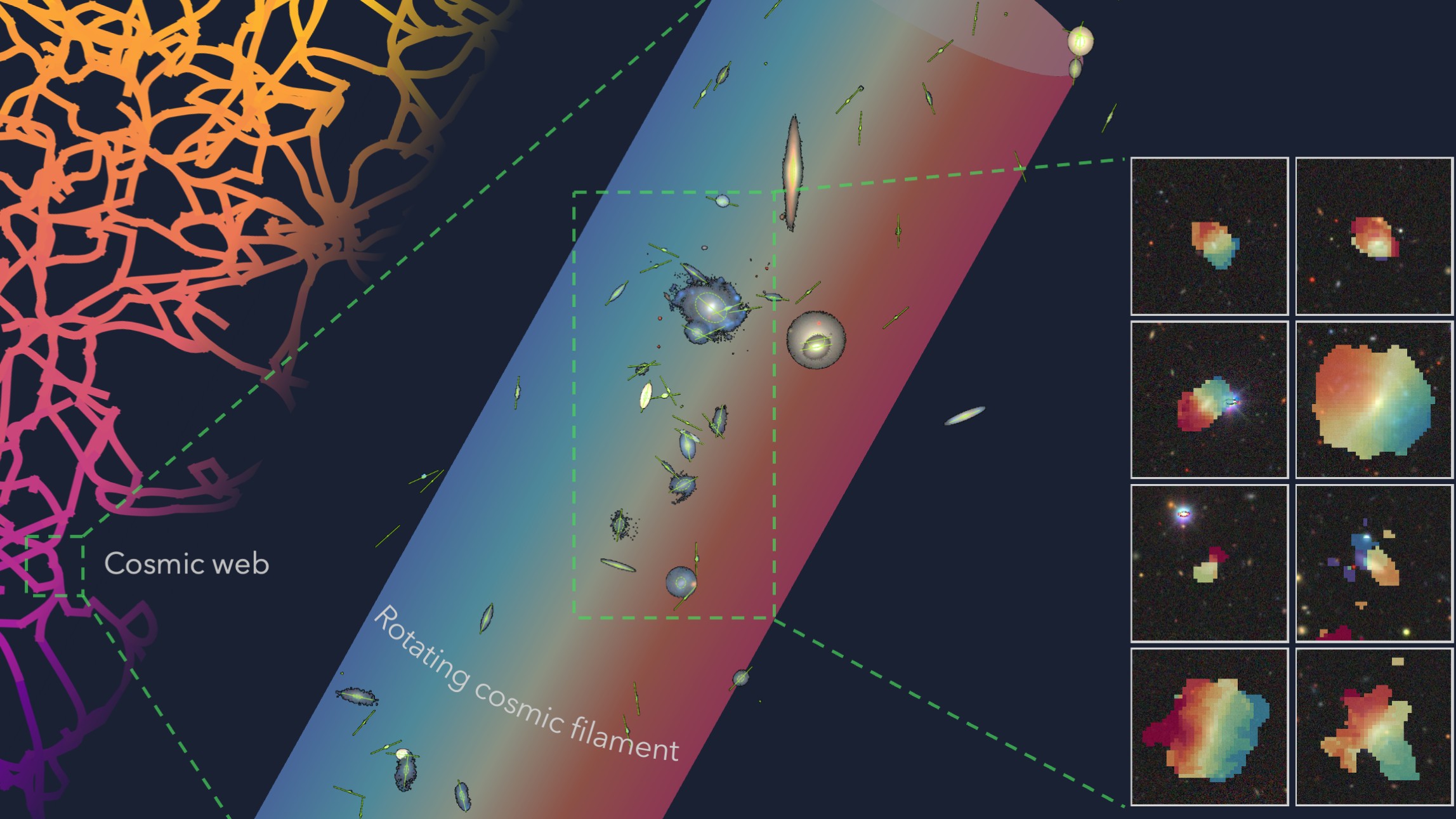Monster black hole M87 is spinning at 80% of the cosmic speed limit — and pulling in matter even faster
The famous black hole M87 keeps surprising us. New research calculates its spin speed to be at 80% of the theoretical limit, with matter falling into its maw even faster.

The monster black hole lurking at the center of galaxy M87 is an absolute beast. It is one of the largest in our vicinity and was the ideal first target for the Event Horizon Telescope. Scientists have taken a fresh look at the supermassive black hole using those iconic Event Horizon Telescope images and have now figured out just how fast this monster is spinning and how much material it's devouring.
The results are pretty mind-blowing. This black hole, which weighs in at 6.5 billion times the mass of our Sun, is spinning at roughly 80% of the theoretical maximum speed possible in the universe. To put that in perspective, the inner edge of its accretion disk is whipping around at about 14% the speed of light - that's around 42 million meters per second.
The team figured this out by studying the "bright spot" in the original black hole images. That asymmetric glow isn't just there for show - it's caused by something called relativistic Doppler beaming. The material on one side of the disk is moving toward us so fast that it appears much brighter than the material moving away from us. By measuring this brightness difference, the scientists could calculate the rotation speed.
But here's where it gets really interesting. The researchers also looked at the magnetic field patterns around the black hole, which act like a roadmap for how material spirals inward. They discovered that matter is falling into the black hole at about 70 million meters per second - roughly 23% the speed of light.

Using these measurements, they estimated that M87's black hole is consuming somewhere between 0.00004 to 0.4 solar masses worth of material every year. That might sound like a lot, but it's actually pretty modest for such a massive black hole - it's operating well below what scientists call the "Eddington limit," meaning it's in a relatively quiet phase.
Perhaps most importantly, the energy from all this in-falling material appears to perfectly match the power output of M87's famous jet - that spectacular beam of particles shooting out at near light-speed that extends for thousands of light-years. This supports the idea that these powerful jets are indeed powered by the black hole's feeding process.
Get the world’s most fascinating discoveries delivered straight to your inbox.
The study represents a major step forward in understanding how supermassive black holes work. While previous estimates of M87's spin ranged anywhere from 0.1 to 0.98, this new method suggests it's definitely on the high end - at least 0.8 and possibly much closer to the theoretical maximum of 0.998.
As we gear up for even more powerful telescopes and imaging techniques, M87's black hole will likely remain a cosmic laboratory for testing our understanding of gravity, spacetime, and the most extreme physics in the universe. Each new measurement brings us closer to answering fundamental questions about how these cosmic monsters shape entire galaxies and maybe even how they'll influence the ultimate fate of the cosmos itself.
The original version of this article was published on Universe Today.

Mark Thompson is known for his tireless enthusiasm for making science accessible, through numerous TV, radio, podcast theater appearances, and books. He was a part of the award-nominated BBC Stargazing LIVE TV Show in the UK and his Spectacular Science theater show has received 5 star reviews across UK theater. In 2018, Mark received an Honorary Doctorate from the University of East Anglia.
You must confirm your public display name before commenting
Please logout and then login again, you will then be prompted to enter your display name.
